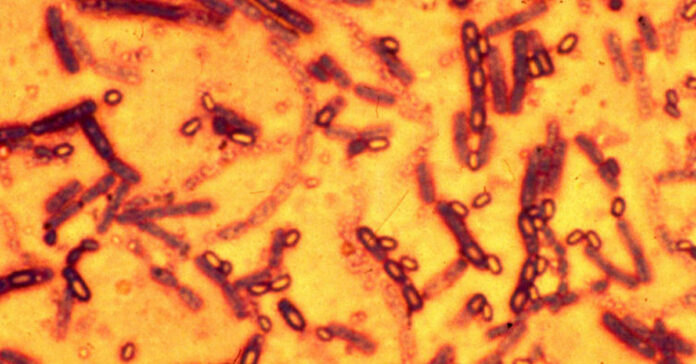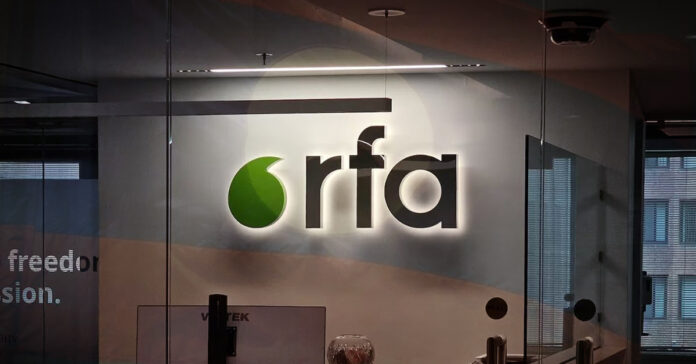
- The Centre for Impact Investing and Practices and the World Economic Forum’s GAEA (Giving to Amplify Earth Action) initiative, supported by the Philanthropy Asia Alliance, have released a study urging cross-sector investment to tackle antimicrobial resistance (AMR) in Asia.
- AMR could cost Asia up to US$700 billion by 2050 and surpass cancer as the world’s leading cause of death.
- Report outlines four high-impact intervention areas – from education and prevention to surveillance and treatment – to guide funders and partners.
SINGAPORE – Media OutReach Newswire – 5 May 2025 – The Centre for Impact Investing and Practices (CIIP) and the World Economic Forum’s GAEA (Giving to Amplify Earth Action) initiative, supported by the Philanthropy Asia Alliance (PAA), today launched the report — Targeted Action and Financing the Fight Against Antimicrobial Resistance in Asia.
The report underscores the urgent threat of antimicrobial resistance (AMR) in Asia and outlines four key areas where cross-sector funders can drive meaningful impact. It draws on insights from 15 case studies and examples of funding mechanisms, and contributions from 26 organisations, including international organisations, corporations, philanthropic funders, public institutions, and solution providers.
Often called the silent pandemic, AMR was linked to 4.7 million deaths annually in 2021.[1] It is estimated to become the leading cause of death by 2050, claiming more than 8 million lives[2] and surpassing cancer[3]. Beyond human health, AMR threatens global food systems by reducing global livestock production and polluting waterways. Tackling this growing crisis requires a unified, whole-of-ecosystem approach.
“Antimicrobial resistance is a mounting crisis that threatens to reverse decades of medical progress, with Asia at the epicenter of this challenge. We have identified clear needs, but no single organisation can tackle this alone and substantial philanthropic and catalytic funding is required. It demands all actors — across sectors and borders — to step up, pool resources, and collaborate. Together, we hope that through active partnerships, we can build a future where effective treatments remain within everyone’s reach,” said Ms. Dawn Chan, Chief Executive Officer, CIIP.
“The Davos Compact on Antimicrobial Resistance (AMR), launched earlier in January this year, seeks to mobilise public-private-philanthropic, cross sectoral collaboration to reduce the global and increasing threat of AMR. This report builds on the Davos Compact, highlighting practical, high impact interventions where catalytic investments can help safeguard health and well-being, reducing risks and deaths associated with AMR,” said Ms. Gim Huay Neo, Managing Director, Member of the Managing Board, World Economic Forum.
Asia: A Crucible for the Multifaceted AMR Challenge
Globally, nearly one in five AMR-related deaths occur in children under five[4], and two in three in adults over 65[5]. However, Asia bears the brunt of the disease incidence, accounting for more than half of the 4.71 million deaths worldwide associated with AMR in 2021[6]. Rising temperatures and extreme weather events are accelerating bacterial growth and disease transmission, while disrupting healthcare and immunisation services – particularly in regions with inadequate healthcare infrastructure and sanitation. These climate-related pressures are also driving the increased use of antimicrobials in livestock and crops, contaminating freshwater sources and fuelling drug resistance.
In Asia Pacific alone, AMR-related costs are projected to reach up to US$700 billion by 2050, accounting for up to 1% of the region’s GDP[7]. However, timely investment in AMR solutions could generate US$10–15 billion in annual healthcare savings, and cut annual socio-economic costs by up to US$40 billion for Asia Pacific within the next decade.[8] Tackling AMR is essential for health security, as well as ensuring long-term economic resilience and sustainable development.
A Unified Approach to Antimicrobial Development and Use
Despite research advancements, market and policy gaps make it challenging to bring new drugs to patients as the costs involved in development and regulatory approval tend to outweigh the immediate returns upon product launch. A One Health approach — one that recognises the interconnectedness and interdependence across humans, animals, plants, and the wider environment — is essential to tackle AMR sustainably.
While new therapeutics such as drugs and vaccines can take 10 to 15 years to develop and launch to market[9] (a marathon), immediate and practical interventions (sprints) are needed to curb resistance today and pave the way for long-term solutions.
The report thus proposes interventions in four areas:
- Sprint 1: Educate – Improving knowledge and behaviour by strengthening awareness of AMR among clinicians, patients, and farmers; emphasising the importance of avoiding the overuse or abuse of antimicrobials; as well as introducing strategies to prevent infections in the first place.
- Sprint 2: Prevent – Strengthening health systems and services by boosting preventive measures such as improving diagnostic capabilities and investing in better water, sanitation, and hygiene (WASH) measures.
- Sprint 3: Monitor – Enhancing regional surveillance, and data collection and sharing between actors, especially in lower-income countries.
- Marathon: Treat – Investing in research and development for new antimicrobials, and increasing access to novel and essential medicines.
Financing AMR Solutions At Every Stage
Private funders, impact investors, and philanthropists have a vital role to play in closing critical gaps – particularly in late-stage drug development, where funding is scarce. By pooling resources, funders can help bring life-saving treatments to market, strengthen the antibiotic pipeline, and build more sustainable and widespread access to essential medicines.
“This report is a catalyst for deeper involvement from all sectors — philanthropic, public, and private. It highlights the scale of the AMR threat and the opportunity for collective action. We are encouraged by the ongoing work of organisations – including PAA members like the Gates Foundation, Wellcome Trust, and Novo Nordisk Foundation – in driving AMR research and greater access to affordable solutions. Now is the time for more partners to come together, pool resources, and support high-impact solutions that safeguard health and resilience across Asia and beyond,” said Mr. Shaun Seow, Chief Executive Officer, PAA.
The AMR threat demands urgent, coordinated, and sustained action across healthcare, agriculture, and food systems to protect communities in Asia.
Read the full report here: https://ciip.com.sg/knowledge-hub/research-insights/Details/targeted-action-and-financing-the-fight-against-antimicrobial-resistance-in-asia
The issuer is solely responsible for the content of this announcement.
About the Centre for Impact Investing and Practices
The Centre for Impact Investing and Practices (CIIP) was established in 2022 as a non-profit entity by Temasek Trust to foster impact investing and practices in Asia and beyond by building and sharing knowledge, bringing together stakeholders in the community, and bringing about positive action that accelerates the adoption of impact investing principles and practices. CIIP is the anchor partner for the United Nation Development Programme’s Private Finance for the SDGs, providing Asia investors and businesses with clarity, insights and tools that support their contributions towards achieving the SDGs. Temasek and ABC Impact are CIIP’s strategic partners. For more information, please visit  www.ciip.com.sg.
www.ciip.com.sg.
About GAEA (Giving to Amplify Earth Action)
To reach net zero, reverse nature loss and restore biodiversity by 2050, funding for equitable climate and nature transitions must be stepped up by more than $3 trillion annually. No actor can solve these issues alone; only together – through partnerships, elevated ambition and accelerated learning – can the most pressing problems facing the planet be solved. The World Economic Forum launched the GAEA (Giving to Amplify Earth Action) initiative to convene 4P – Public, Private and Philanthropic Partnerships – for climate and nature, activating systemic bold partnerships to improve the state of the world.
About Philanthropy Asia Alliance
Philanthropy Asia Alliance (PAA) is a Temasek Trust initiative dedicated to catalysing collaborative philanthropy in Asia through dynamic multi-sector partnerships. By harnessing collective strengths, PAA multiplies impact, accelerates positive change, and takes urgent action to address the pressing environmental and social challenges of our time. PAA’s flagship programme is the annual Philanthropy Asia Summit. For more information, visit  http://philanthropyasiaalliance.org.
http://philanthropyasiaalliance.org.










